Features
As Africa toes Chinese line …
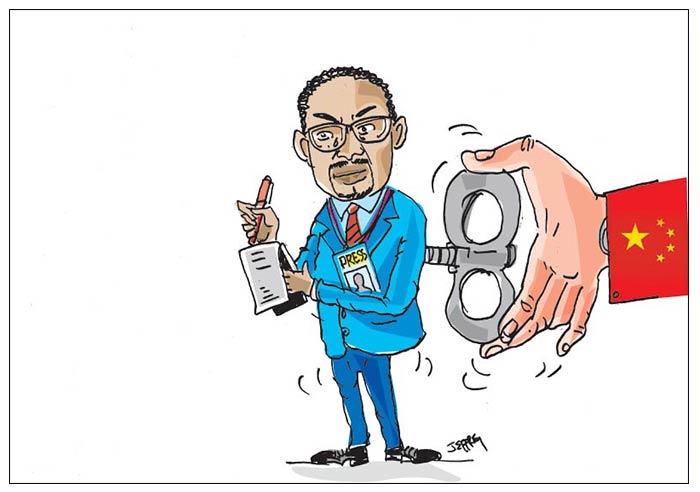
Mitchell Gallagher
Every year, China’s minister of foreign affairs embarks on what has now become a customary odyssey across Africa. The tradition began in the late 1980s and sees Beijing’s top diplomat visit several African nations to reaffirm ties. The most recent visit, by Foreign Minister Wang Yi, took place in mid-January 2025 and included stops in Namibia, the Republic of the Congo, Chad and Nigeria.
For over two decades, China’s burgeoning influence in Africa was symbolised by grand displays of infrastructural might. From Nairobi’s gleaming towers to expansive ports dotting the continent’s shorelines, China’s investments on the continent have surged, reaching over $700 billion by 2023 under the Belt and Road Initiative, China’s massive global infrastructure development strategy.
But in recent years, Beijing has sought to expand beyond roads and skyscrapers and has made a play for the hearts and minds of African people. With a deft mix of persuasion, power and money, Beijing has turned to African media as a potential conduit for its geopolitical ambitions. Partnering with local outlets and journalist-training initiatives, China has expanded China’s media footprint in Africa. Its purpose? To change perceptions and anchor the idea of Beijing as a provider of resources and assistance and a model for development and governance. The ploy appears to be paying dividends, with evidence of sections of the media giving favourable coverage to China.
But as someone researching the reach of China’s influence overseas, I am beginning to see a nascent backlash against pro-Beijing reporting in countries across the continent. China’s approach to Africa rests mainly on its use of “soft power,” manifested through things like the media and cultural programmes. Beijing presents this as “win-win cooperation”—a quintessential Chinese diplomatic phrase mixing collaboration with cultural diplomacy. Key to China’s media approach in Africa are two institutions: The China Global Television Network (CGTN) Africa and Xinhua News Agency.
CGTN Africa, which was set up in 2012, offers a Chinese perspective on African news. The network produces content in multiple languages, including English, French and Swahili, and its coverage routinely portrays Beijing as a constructive partner, reporting on infrastructure projects, trade agreements and cultural initiatives. Moreover, Xinhua News Agency, China’s state news agency, now boasts 37 bureaus on the continent. By contrast, Western media presence in Africa remains comparatively limited.
The BBC, long embedded due to the United Kingdom’s colonial legacy, still maintains a large footprint among foreign outlets, but its influence is largely historical rather than expanding. And as Western media influence in Africa has plateaued, China’s state-backed media has grown exponentially. This expansion is especially evident in the digital domain. On Facebook, for example, CGTN Africa commands a staggering 4.5 million followers, vastly outpacing CNN Africa, which has 1.2 million—a stark indicator of China’s growing soft power reach. China’s zero-tariff trade policy with 33 African countries showcases how it uses economic policies to mould perceptions.
And state-backed media outlets like CGTN Africa and Xinhua are central to highlighting such projects and pushing an image of China as a benevolent partner. Stories of an “all-weather” or steadfast China-Africa partnership are broadcast widely and the coverage frequently depicts the grand nature of Chinese infrastructure projects. Amid this glowing coverage, the labour disputes, environmental devastation or debt traps associated with some Chinese-built infrastructure are less likely to make headlines. Questions of media veracity notwithstanding, China’s strategy is bearing fruit.
A Gallup poll from April 2024 showed China’s approval ratings climbing in Africa as US ratings dipped. Afrobarometer, a pan-African research organisation, further reports that public opinion of China in many African countries is positively glowing, an apparent validation of China’s discourse engineering. Further, studies have shown that pro-Beijing media influences perceptions. A 2023 survey of Zimbabweans found that those who were exposed to Chinese media were more likely to have a positive view of Beijing’s economic activities in the country. The effectiveness of China’s media strategy becomes especially apparent in the integration of local media.
Through content-sharing agreements, African outlets have disseminated Beijing’s editorial line and stories from Chinese state media, often without the due diligence of journalistic scepticism. Meanwhile, StarTimes, a Chinese media company, delivers a steady stream of curated depictions of translated Chinese movies, TV shows and documentaries across 30 countries in Africa. But China is not merely pushing its viewpoint through African channels. It’s also taking a lead role in training African journalists, thousands of whom have been lured by all-expenses-paid trips to China under the guise of “professional development.” On such junkets, they receive training that critics say obscures the distinction between skill-building and propaganda, presenting them with perspectives conforming to Beijing’s line.
Ethiopia exemplifies how China’s infrastructure investments and media influence have fostered a largely favourable perception of Beijing. State media outlets, often staffed by journalists trained in Chinese-run programmes, consistently frame China’s role as one of selfless partnership. Coverage of projects like the Addis AbabaDjibouti railway line highlights the benefits, while omitting reports on the substandard labour conditions tied to such projects—an approach reflective of Ethiopia’s media landscape, where state-run outlets prioritise economic development narratives and rely heavily on Xinhua as a primary news source. In Angola, Chinese oil companies extract considerable resources and channel billions into infrastructure projects.
The local media, again regularly staffed by journalists who have accepted invitations to visit China, often portray Sino-Angolan relations in glowing terms. Allegations of corruption, the displacement of local communities and environmental degradation are relegated to side notes in the name of common development. Despite all of the Chinese influence, media perspectives in Africa are far from uniformly pro-Beijing. In Kenya, voices of dissent are beginning to rise and media professionals immune to Beijing’s allure are probing the true costs of Chinese financial undertakings. In South Africa, media watchdogs are sounding alarms, pointing to a gradual attrition of press freedoms that come packaged with promises of growth and prosperity.
In Ghana, anxiety about Chinese media influence permeates more than the journalism sector, as officials have raised concerns about the implications of Chinese media cooperation agreements. Wariness in Ghana became especially apparent when local journalists started reporting that Chinese-produced content was being prioritised over domestic stories in state media.
Beneath the surface of China’s well publicised projects and media offerings, and the African countries or organisations that embrace Beijing’s line, a significant countervailing force exists that challenges uncritical representations and pursues rigorous journalism. Yet as CGTN Africa and Xinhua become entrenched in African media ecosystems, a pertinent question comes to the forefront: Will Africa’s journalists and press be able to uphold their impartiality and retain intellectual independence? As China continues to make strategic inroads in Africa, it’s a fair question.
(The writer is a PhD candidate of political science at Wayne State University, US. This article was published on www.theconversation.com)
Features
Defining Oxygen Economy for sustaining life on Earth and growing intergenerational wealth
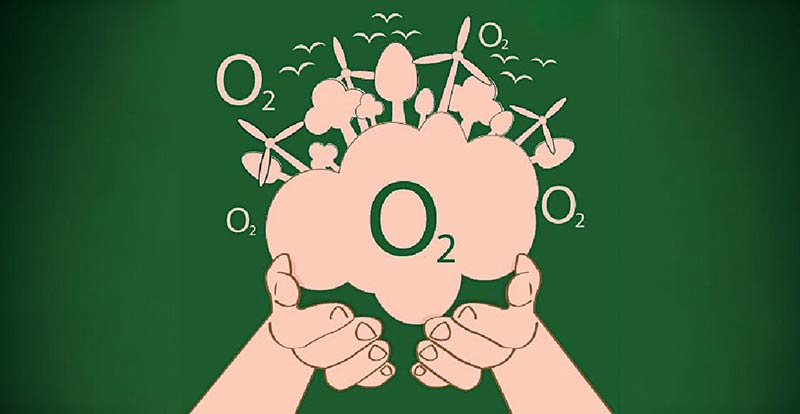
by Dr. Ranil Senanayake
The Oxygen that is present in the air that we breathe is the birth right of every organism that lives on this planet. It is free for everyone. However, the action of some to take out more than their share, without replacement, has created a condition, where the Global Commons of air is being rapidly degraded,
The most critical component of air is Oxygen. It surrounds us, filling our lungs with every breath we take. It is the invisible gift of nature that we take for granted. But this essential resource—the very foundation of life— is being constricted, because the volume of trees, plants, and photosynthetic organisms that produce oxygen is being lost across the planet. Further, there is no initiative for this generation capacity to be increased as a matter of urgency. exploited at present? Why couldn’t increasing the generation capacity of Oxygen have economic value? Could those who benefit most from using the resources of the Global Commons be required to contribute to its maintenance? This is the idea behind the Oxygen Economy, a bold and transformative concept that seeks to address environmental and social challenges in a way that is fair, sustainable, and forward-thinking beyond GDP value which measures the success of our societies today.
What Is the Oxygen Economy?
The Oxygen Economy is a financial framework, that recognises the value of the global stocks of Oxygen within the commons and records the deposition and consumption through economic activity.
The Oxygen Economy is a principled framework that recognises the stocks, transactions and deposits of Oxygen into the Global commons and assigns value to stocks from privately contracted production units, it stems from a growing recognition that Oxygen is a declining resource with an easy replenishment response.
Oxygen, considered a “free” resource. It is not. Much like oil and coal it is a ‘fossil’ resource that has been a part of the atmosphere for millions of years. It has been slowly declining, but is ‘topped up’ by a service provided by the earth’s ecosystems —particularly trees, plants, and other photosynthetic organisms. These organisms create molecular Oxygen through the process of photosynthesis, supporting life on earth and maintaining the balance of our atmosphere.
At its core, the Oxygen Economy aims to ensure that those who produce contracted and monitored oxygen, be it towns, farmlands, rural or forested lands, are fairly compensated for their efforts. It also holds industries and private-sector entities that benefit from oxygen consumption accountable in maintaining the sustainability of this resource.
What is the urgency to address oxygen as a depleting resource?
Other than the obvious fact of falling global stocks, the need of an Oxygen Economy arises from the urgency of addressing two critical challenges facing humanity: environmental degradation and economic inequality. Placing value on Oxygen production could effectively provide an effective response to both. For decades, efforts to combat climate change have focused primarily on carbon
sequestration. While important, the focus on Carbon sequestration often overlooks other vital ecosystem services, including oxygen production that can contribute towards a growing wealth paradigm. Oxygen, like water and food, is essential for life. However, unlike other resources, it has largely been treated as infinite and freely available, which it is not. In reality, the supply of Oxygen to the atmosphere is decreasing due to deforestation, while the consumption of Oxygen by space exploration, industrial production, war and transport are increasing. Today Oxygen levels have dropped by approximately 2%, raising concerns about the long- term sustainability of this critical resource.
How the Oxygen Economy works
The Oxygen Economy operates on the principles of private property being valued using financial tools such as valuation guarantees, stakeholder contracts and Insurances to monetise contractually produced oxygen as a financial product. This involves three key components:
1. Valuation guarantee:
Assigning an economic value to the oxygen produced by contracted and registered units in identified geographical areas of production is based on the researched, monitored and validated measurements of oxygen generation by trees / plants or photosynthetic organisms such as Cyanobacteria.
2. Deposition guarantee:
Issuance of certificates of completion and deposit of Oxygen into the global Commons Stakeholder Contracts and Compensation: Establishing formal agreements between oxygen consumers (e. g., corporations / Space exploration companies) and contracted oxygen producers (e.g., farmers, Local communities)
3. Policy and regulation: Introducing replicable legal frameworks at a regional scale to enforce accountability and prevent the uncontrolled exploitation of global oxygen resources.
Lessons from Sri Lanka
One country that is already exploring the potential of the Oxygen Economy is in the bioregional area of Sri Lanka. Known for its rich biodiversity and commitment to environmental stewardship, Sri Lanka has implemented initiatives that align with the principles of the Oxygen Economy. In one notable project, women from farming communities established and nurtured trees using contracts that measured and validated payments for photosynthetic biomass on an annually recurring basis for a period of four years. The stakeholders earning substantive income from this project were sensitised to the emerging Oxygen Economy while contributing their obligations to global environmental resilience. Over three years, these participants generated thousands of litres of oxygen, demonstrating that the concept is not only viable but also impactful.
Scaling the Oxygen Economy globally:
While Sri Lanka’s efforts are a promising start, the true potential of the Oxygen Economy
lies in its ability to scale globally. Imagine a world where farmers are compensated for the establishment of trees, where rural and even urban greenery projects could receive funding to expand their impact for this paradigm of business. Such a system would not only help combat climate change but also address economic inequalities of the current GDP paradigm, by together contracting the Oxygen economic asset tool to those who sustain the planet’s life-support systems.
Addressing potential challenges
Like any transformative idea, the Oxygen Economy faces potential challenges. Critics may argue that assigning a monetary value to Oxygen risks commodifying a natural resource that should remain freely accessible. Others may question the feasibility of measuring, validating and regulating oxygen production on a global scale. These concerns can be addressed by emphasising the ethical principles behind the Oxygen Economy. The goal is not to charge people for breathing but to ensure that those who contribute to its sustainability profit from financial contracts for Oxygen production. Additionally, such transparent systems for measuring and validating oxygen production will be crucial for building trust and ensuring fairness towards the vision of accounting for intergenerational wealth beyond the GDP framework that exists.
A vision for the future
The Oxygen Economy represents a paradigm shift in how we think about our relationship with the planet. It challenges us to move beyond the notion of nature as an infinite resource and to recognise the boundaries of our Global Commons. The true value of planet Earth is as an ecosystem that sustains life for all biota. By aligning economic practices with environmental stewardship, the Oxygen Economy offers a path towards a more equitable and sustainable future. It supports the foundations of intergenerational wealth that will be reflected in our contributions to the cycling atmospheric gasses of our Global Commons.
Imagine a world where the air we breathe is not taken for granted but is cherished and protected. Where farmers, communities, and ecosystems are rewarded for their contributions to the planet’s well-being. Where industries operate with a framework of accountability to prioritise the health of our shared environment. This is the vision of the Oxygen Economy—a vision that is within our reach if we act together, with urgency and determination, to lay well informed, solid foundations.
Features
Two sides to a coin; each mourn threat; no threat, no budget blues

 The coin Cassandra starts her Friday Cry with the recent film Rani. Parroting what her friends said on seeing the film, Cass in her Cry just prior to this wrote: “It has been reviewed as outstanding; raved over by many; and already grossed the highest amount in SL cinema history – Rs 100 million from date of release January 30 to February 14. This last: testimony to its popular appeal and acceptance as an outstanding cinema achievement.
The coin Cassandra starts her Friday Cry with the recent film Rani. Parroting what her friends said on seeing the film, Cass in her Cry just prior to this wrote: “It has been reviewed as outstanding; raved over by many; and already grossed the highest amount in SL cinema history – Rs 100 million from date of release January 30 to February 14. This last: testimony to its popular appeal and acceptance as an outstanding cinema achievement.
” Cass admitted she had not seen the film. She now realises her reluctance to jostle in the crowd in one of many cinemas retelling the murder of Richard de Zoysa and traumatic mourning of his mother, Manorani, was because there grew in her a distaste after watching short previews on YouTube of parts of the film. Most centered on is Swarna Mallawarachchi, starring as Manorani, downing alcohol and smoking cigarette after cigarette. Director Asoka Handagama was sensationlising the more dramatic incidents of the tragedy. That was to please the crowd.
We Sri Lankans, or many, have absolutely no tight upper lip. Most funerals of yesteryear and many rural ones still have writhing moaning and groaning and appeals to the dead to smile one more time, say a word, rise up. These loud gasped cries in between sobbing sent Cass wickedly into silent giggles. She thought: what if the dead obliged with even one request. Worst, if he rose up and sat in his coffin. The first to run away would be the callers! People love wallowing in sniffles of sorrow. Audiences much prefer fictionalised retelling of events to documentaries about them. Handagama does style his film as fictionalised history but he definitely is guilty of sensationalism. Cass’ gut feelings have been given words in a criticism on Face Book which was shared with Cass by a nephew.
The sent around message is titled: Misconceived, Misinterpreted, Miscast and a Big Mistake. That tells it all. However there follows an incisive critique of the film Rani by one of Richard’s friends who knew Manorani well and how she was after her son’s death. He signs himself, but Cass will not quote the name here since there is much truth, lies and even hidden agendas in what is posted on social media.
He writes: “Badly acted, badly directed and badly researched … A clear example of character assassination via a deliberate misuse of artistic license! … I want to state my opinion about two people that many of us loved, respected and knew intimately.” He then goes on to point out mistakes and exaggerations: Manorani was never even bordering on alcoholism and hardly ever smoked. And when she did, socially or to dim her sorrow, she did it elegantly. A Man Friday commented: they should have taught Swarna how to hold a cigarette and smoke it as it should be smoked. Hence my contention, every coin, even a box office success, has two sides to it, two diverse criticisms and in-betweens. Decision: Cass will not queue for a cinema ticket.
Each morn
Phoned a US living friend who was recovering from a harsh winter’s gift to her – severe flu. She said the flu was leaving her but depression and distraught-ness about hers and the US’s future were threatening to drown her in emotional turmoil much worse than the worst cough ‘n cold.
I knew the reason – Trump’s trumpets of new opinions, threats, enactments et al. She dreaded getting up each morning wondering what new calamity was to descend on the American people and by influence, spreading to the world. Her son has forbidden TV news watching and reading the newspapers which she says are so opposed to media treatment of the Prez.
I could very well sympathise with her. We in Sri Lanka suffered bouts of such threatened discomfort, nay calamitous warnings and sheer dread. My remembering mind went to Shakespeare in his tragic play Macbeth. Macduff’s description of Scotland under the reign of Macbeth to Malcolm, son and heir of murdered Duncan now sheltered in England, goes thus: “Each new morn/ New widows howl, new orphans cry/ new sorrows strike heaven on the face that it resounds.”
Cass does not know about you but dread lurked in her heart and mind when the JVP 1989 insurrection took place – for her teenage son. The LTTE and suicide bombs caused utter destruction of life, limb and infrastructure. Families who had travelled together now travelled to schools and workplaces separately since no bus or train was safe. Nor were the privately owned cars. Then came two tyrant Presidents with sudden deaths of prominent persons and media personnel like Richard and Lasantha and many others.
Blatant robbing of our money had us gasping helplessly. Riff raff rose in power and lorded, one such tying a man to a stake for not attending a meeting. Then rode to power on popular vote another brother in the newly created powerful dynasty. Word of mouth minus stroke of pen had orders given out to be promptly executed. White vans which plied the streets were reduced but worse happened.
One order and the rice fields had no grain, fruits dried on trees, forex earning luscious two leaves and a bud withered and could not be plucked. Bankruptcy resulted. But we had a ‘shipless’ harbour which had to be mortgaged for a song to the Chinese; a plane-less airport sounding death to elephants and peafowl; and a gaudy tower to gaze on or commit suicide from. A gathering of people on Galle Face Green righted things.
Then came into power a party that had two men and a woman in Parliament which yielded a true Sri Lankan with country first and last in mind, as President. Followed a sharp victory for the coalition of parties led by the hopefully reformed JVP so that three seats became almost two thirds of all seats in Parliament and a woman as Prime Minister. She had no connection to previous Heads unlike a former woman PM and Prez. The first woman PM rode to power weeping for her murdered husband; the younger very promising Prez because she was daughter of two Heads of Sri Lanka. But there was, even under their reign, mutterings and difficulties.
Truth be told, we sleep better at night and wake up with no dread in our innards. We rise to shine (if possible, in the heat of Feb) knowing people are working and corruption is not wrought by those in power. Thank goodness and our sensible voters for this peace we savour.
2025 Budget
Cass’ title has the phrase ‘no budget blues’. Looks like it is generally correct. Of course, the Opposition is criticising Finance Minister AKD’s presented budget. Cass is no economist, not by a long chalk, but she was glad to see that expenditure on health and education were substantial. We had a time when the armed forces were allocated more than education and health combined. Much has been looked into: including pregnant women and the Jaffna library among a host of mentioned amenities. We have no need to pessimistically await a Gazette Extraordinary stating negative segments of the future year’s financial plan. Thanks be!
Gaza and Ukraine are worse in position and the world is awry. But Sri Lanka is in a phase where Kuveni’s curse is stilled and people are considering themselves Sri Lankans, uniting to re-make Sri Lanka Clean as it was before selfish corrupt politicians took over.
Features
Don’t betray baiyas who voted you into power for lack of better alternative:
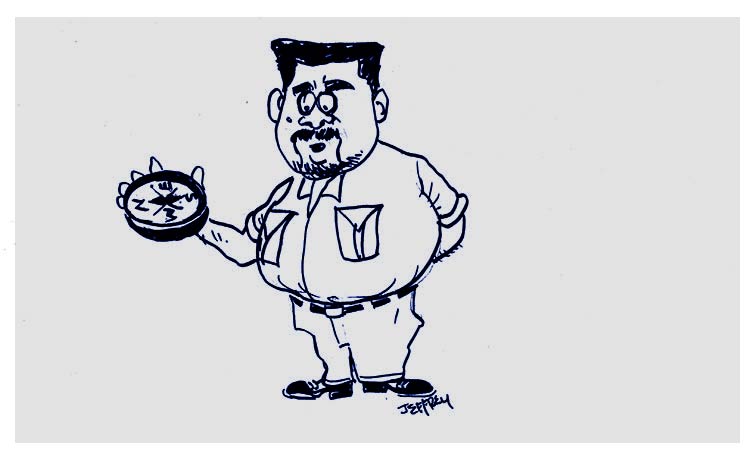
by Rohana R. Wasala
(Continued from Monday, February 17, 2025)
When I am formulated, sprawling on a pin” (from T.S. Eliot’s poem ‘The Love Song of Alfred J. Prufrock’ first published 1915)
In moments of self-reflection, President Anura Kumara Dissanayake probably feels the way Prufrock does, helplessly exposed to the probing, judgemental gaze of the public like an anaesthetised insect, say a cockroach, pinned down on a dissecting table in a school science lab. There are a number of similarities and dissimilarities that can be discerned between the fictional Prufrock and the real Dissanayake, such as those in relation to their culturedness or lack of it and self-conscious pretences.
I ended Part II with the question (as rephrased) whether the JVP/NPP (Malimawa) members believe that all ordinary Sri Lankans approve of their method of combating corruption, while also sharing their deeply negative view of 76 years of post-independence national development, with equal conviction and commitment. The obvious answer is that the Malimawans do believe so. But the reality is not what they believe. The reality is that growing numbers of ordinary Sri Lankans have begun to think that the Malimawans are not actually serious about eliminating corruption, for they seem to be beholden to certain sleazy big businessmen for having contributed lavish funds to the JVP party coffers, and that they are succumbing to the neoliberal (open market) economic policies introduced 47 years ago that they then fought tooth and nail, even shedding their blood. They are now doing the exact opposite of what they promised.
The resultant public dissent from these unexpected about-turns of the Malimawans could trigger not so gentle a reaction from them; the JVP has a history of resorting to violent repression out of a sense of righteous indignation based on their own logic. A Meta/FB video critical of the government uploaded by a Ranil Wickremasinghe supporter in Matale in central Sri Lanka went viral a couple of days ago. The FB activist was expressly visited by a local member of the JVP to warn him and demand that he take down the offensive video immediately, but he refused to do so, even after the JVPer issued a dire warning. This could be regarded as an early sign of possible, even probable, future authoritarian suppression of democratic dissent under the Malimawa administration. More serious similar cases of suppression of opposition (like the recent physical attack on a rival activist in Kamburupitiya) are becoming daily occurrences.
Does the current performance of the NPP promise a good enough change from the Gotabhaya Rajapaksa legacy to justify their arrogant intolerance of adverse criticism?
The previous presidential and parliamentary elections held respectively on November 16, 2019 and August 5, 2020 and won by Gotabaya Rajapaksa and the Sri Lanka Podu Peramuna (SLPP or Pohottuwa) led by his brother Mahinda Rajapaksa would provide an informative contrast to those held respectively on September 21 and November 13, 2024 and won by Anura Kumara Dissanayake, the leader of the JVP/NPP (Malimawa). There was a clear-cut policy framework to be implemented in a unitary state with a single legal system based on the One Country, One Law principle. A common judicial system for the whole country was considered so important for social cohesion in the multiethnic society and for national security that after assuming the office of president, GR appointed a presidential task force to prepare the ground for implementing the One Country One Law principle with the democratic consent of the general multiracial, multireligious multicultural public. The highest priority was given to national security. This was natural to a country just rescued from separatist terrorism. Other key election pledges included a homegrown people-focused economic development system with special attention to the semi urban and rural sectors, an independent, non-aligned foreign policy for maintaining well balanced friendly relations with other nations, a corruption-free civil administration, and a knowledge and technology-based society consisting of disciplined, law-abiding citizens committed to high moral and ethical values (as spelt out in the SLPP election manifesto of 2019).
What the SLPP manifesto promised was a reinforcement of the successful economic policies of ten years of MR rule (2005-2014) which raised the country to the status of a middle-income country with a growth rate of 7-8% by the end of 2014 in terms of World Bank assessments. This was achieved while fighting a wasteful terror elimination war amidst powers that be throwing spanners in the works. Five years of Yahapalanaya (2015-2019) installed courtesy those sinister forces, reduced the country to penury and the growth rate down to 2-3%. Did the Malimawa manifesto promise anything different from the IMF dependent economic model followed during the Yahapalanaya?
The JVP/NPP manifesto of 2024 did not offer as clear a vision for the future as the SLPP one of 2019. The reputedly Marxist Malimawans promised to continue with the neoliberal economic reforms Ranil Wickremasinghe proposed in his Economic Transformation Bill of May 2024 in terms of which “…Foreign investments shall be permitted into all sectors and regions of Sri Lanka. Foreign investors shall be permitted to own one hundred per centum of the shares in entities engaged in such sectors and regions, unless otherwise determined by way of regulations made under the provision of this Part or any other written law…” in compliance with stringent IMF regulations that contra-Marxist Ranil Wickremasinghe had accepted. The budget proposals (announced February 17) are a hardly veiled confirmation of those economic policies.
Days prior to the Budget debate, ex-MP Wimal Weerawansha, leader of the Jathika Nidahas Peramuna (National Freedom Front) who had remained a JVP member until 2008 described the JVP/NPP (Malimawa) as a left-neoliberal alliance. Essentially the Malimawa manifesto seems a virtual replication of economic and constitutional reforms the Yahapalanaya attempted after the foreign engineered regime change of 2015 (connected, in retrospect, with the ongoing USAID controversy).
At the Independence Day ceremony named Nava Yugayak Arambamu (Beginning of a New Era) held at the Independence Square in Colombo on February 04, 2025, president Anura Kumara Dissanayake declared: ‘Instead of celebrating the Independence Day with a backward look at the past, this time, we observe the day looking towards the future’. But he made passing mention of the republican change introduced in 1972 (probably only to salve his conscience). In his brief address, president Dissanayake repeated, with one important substitution, the famous Five Great Forces (Pancha Maha BalaWegaya) that the left leaning nationalist SWRD Bandaranaike, leader of the SLFP-led MEP (Mahajana Eksath Peramuna) mobilised while spearheading the historic soft revolution of 1956 (i.e., the democratic overthrow of the pro-West/rightwing UNP, that had ruled during the previous eight years). AKD left out the Sangha (Buddhist monk) Force, and included instead the Security departments (implying the security, civil defence, and police forces): Thus, he briefly touched on farmers and fishers, teachers, health personnel, security forces, and workers. The deliberate exclusion of the Sangha (Buddhists monks) as an influential section of the national polity was perhaps meant to emphasise his secular credentials, his ‘secular’ approach to governance.
This is not the first or the last time that his deliberate suppression of his own culturedness or his insensitive display of lack of it angered the baiyas, especially, the Sinhalese Buddhist majority who have no other country to proudly express and freely assert their hallowed, over two millennia old Buddhist cultural identity as a sovereign nation. His public desecration once of the pirith noola that the Mihintale monk tied on his arm as a blessing (by tearing it off as soon as he left the monk’s presence), his dispensing with the long established ritual of singing Jayamangala Gathas by a bevy of schoolgirls at the opening of parliament, and his curt dismissal of a monk’s offer to administer pansil as a customary blessing at the inauguration of a public party event recently at Kurunegala have not endeared him to the sensible public. AKD must get rid of his obsession with publicly showing off his ‘secularism’ (that I am 100% sure he, his party and followers have thoroughly misconceived) for his own good and more importantly, for the good of the country.
It was rumoured that attempts were being made to revive the UNP by bringing the deserters back to its fold along with their leader Sajith Premadasa. At the time of writing this, the proposed reconciliation appears to have been worked through ahead of the impending Provincial Council elections. Despite this, it has also been hinted that the two groups are not likely to face the provincial council elections as a common front. One factor that would give AKD a sense of frustration in this context is: Although the well-known history of the aged politicos executing this latest manoeuvre who were key figures of the controversial Yahapalanaya regime (2015-19) whose unpopularity and bad governance paved the way for the resounding victory of Gotabaya Rajapaksa at the 2019 election, the voters of the North and East provinces might switch their allegiance back to Ranil and Sajith. The prospects of such attempts at bringing about a reconciliation between RW and SP succeeding looked rather dim before. But now, that is not the case. They seem to have patched up their relationship at least temporarily so as to pose a strong challenge to the NPP. This and other deft opposition moves will not augur well for the longevity of AKD’s fledgling presidency and the future functioning of his government.
Behind the blown-up bravado that AKD attempts to maintain when abroad, he seems to be as shy as a cockroach. At home, he might be trying to fight shy of having to face the implications of the cockroach hypothesis of the efficient market theory (The cockroach hypothesis says that when a company announces bad news, more bad news is sure to follow).
But this is only to pep you up Mr. President.
“Some are born great, some achieve greatness, and some have greatness thrust upon them” as a character in a Shakespeare play says. President Anura Kumara Dissanayake! Please prove worthy of the greatness that you have both achieved by the dint of hard work and have also thrust upon yourself by the maelstrom of global politics. Please make use of the unprecedented opportunity you have won to save our beloved Motherland without selling her and her children down the river for short term political gain. I know that you, as a genuine baiya, are patriotic and self- denying. Good Luck to you! (Concluded)
-

 Sports6 days ago
Sports6 days agoRemarkable turnaround for Sri Lanka’s ODI team
-

 Features6 days ago
Features6 days agoScammed and Stranded: The Dark Side of Sri Lanka’s Migration Industry
-
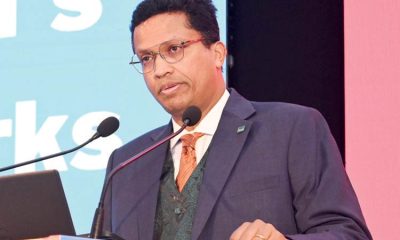
 Business6 days ago
Business6 days agoUN Global Compact Network Sri Lanka: Empowering Businesses to Lead Sustainability in 2025 & Beyond
-
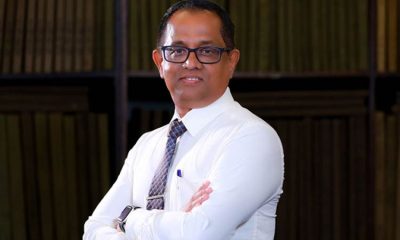
 News7 days ago
News7 days agoSpeaker agrees to probe allegations of ‘unethical funding’ by USAID
-
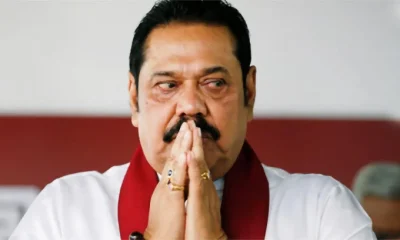
 Features5 days ago
Features5 days agoDon’t betray baiyas who voted you into power for lack of better alternative: a helpful warning to NPP – II
-
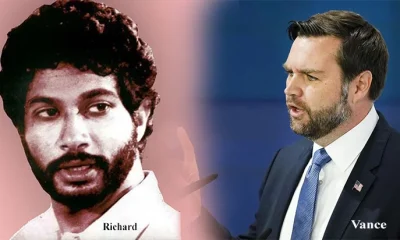
 Features5 days ago
Features5 days agoTwo films and comments
-

 News3 days ago
News3 days agoCommercial High Court orders AASSL to pay Rs 176 mn for unilateral termination of contract
-
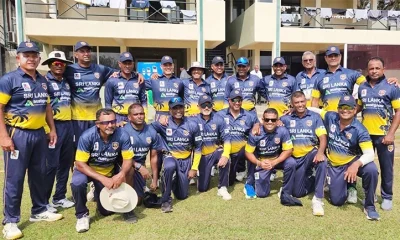
 Sports2 days ago
Sports2 days agoSri Lanka face Australia in Masters World Cup semi-final today











